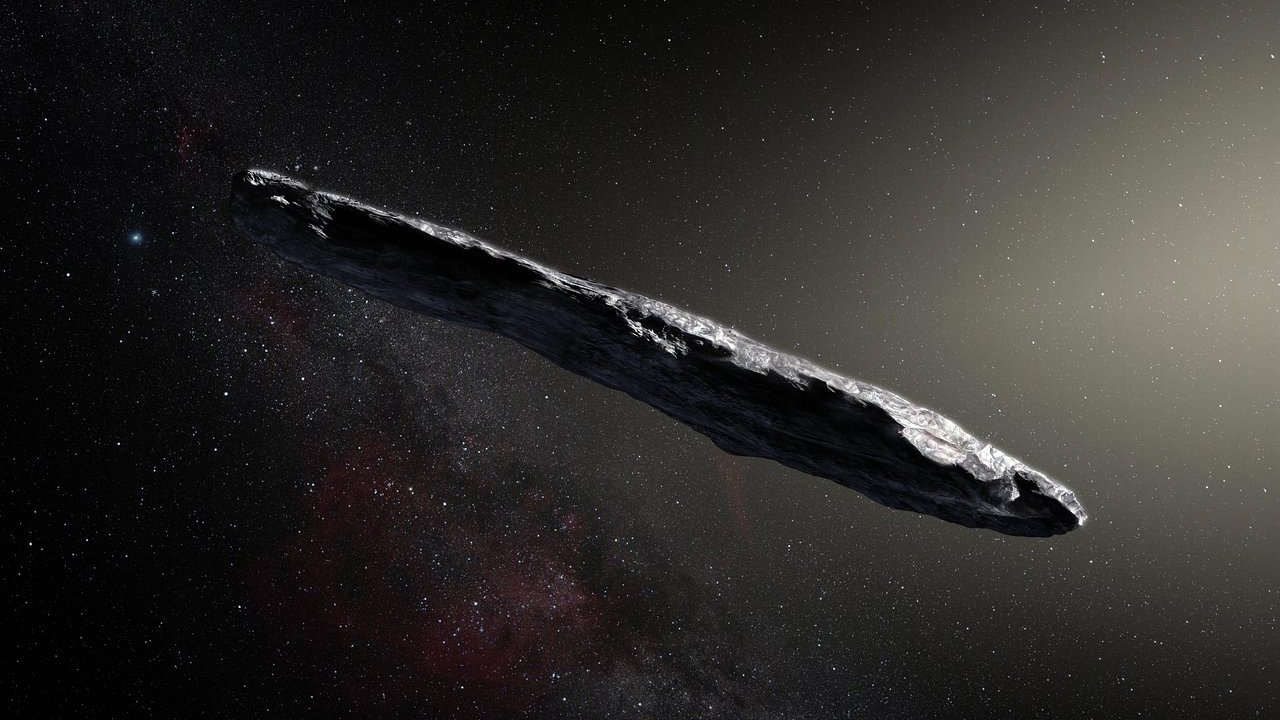The first asteroid from outside the solar system is like nothing we've ever seen
Long, dark and red

In mid-October 2017, a telescope in Hawai'i spotted a speck of light passing across the sky. Astronomers first thought it was normal asteroid, albeit one moving pretty fast, but after a few days of observations they threw that theory out of the window. The object was not from our solar system at all.
In the days that followed, the European Southern Observatory (ESO) brought its Very Large Telescope to bear on the object - which by this point had been named 1I/2017 U1, or "`Oumuamua".
"We had to act quickly," said team member Olivier Hainaut from ESO in Garching, Germany. "`Oumuamua had already passed its closest point to the Sun and was heading back into interstellar space."
Orbit, brightness and color
By combining images captured through four different filters with pictures from other large telescopes, the team measured `Oumuamua's orbit, brightness and color. They detected that it varies dramatically in brightness as it spins on its axis every 7.3 hours.
Karen Meech, who led the team, explained what this means: “This unusually large variation in brightness means that the object is highly elongated: about ten times as long as it is wide, with a complex, convoluted shape. We also found that it has a dark red color, similar to objects in the outer Solar System, and confirmed that it is completely inert, without the faintest hint of dust around it.”
The astronomers believe that the asteroid, which is about 400 metres long, obtained its reddish colour from the bombardment of cosmic rays over the millions of years that it has spent in deep space.
Where did it come from?
Orbital data suggests that it came from what is now the direction of the star Vega, but Vega is so far away that it wouldn't have actually been in that position when the object left. As such, `Oumuamua may have been spinning through the Milky Way for hundreds of millions of years before we found it in our celestial garden.
Get daily insight, inspiration and deals in your inbox
Sign up for breaking news, reviews, opinion, top tech deals, and more.
We're not entirely sure how common it is for interstellar objects like this one to visit us. Astronomers believe it might be as regular as once per year, but it's only recently that we've been able to build telescopes powerful enough to detect them.
"We are continuing to observe this unique object," said Hainaut, "and we hope to more accurately pin down where it came from and where it is going next on its tour of the galaxy. And now that we have found the first interstellar rock, we are getting ready for the next ones!"
